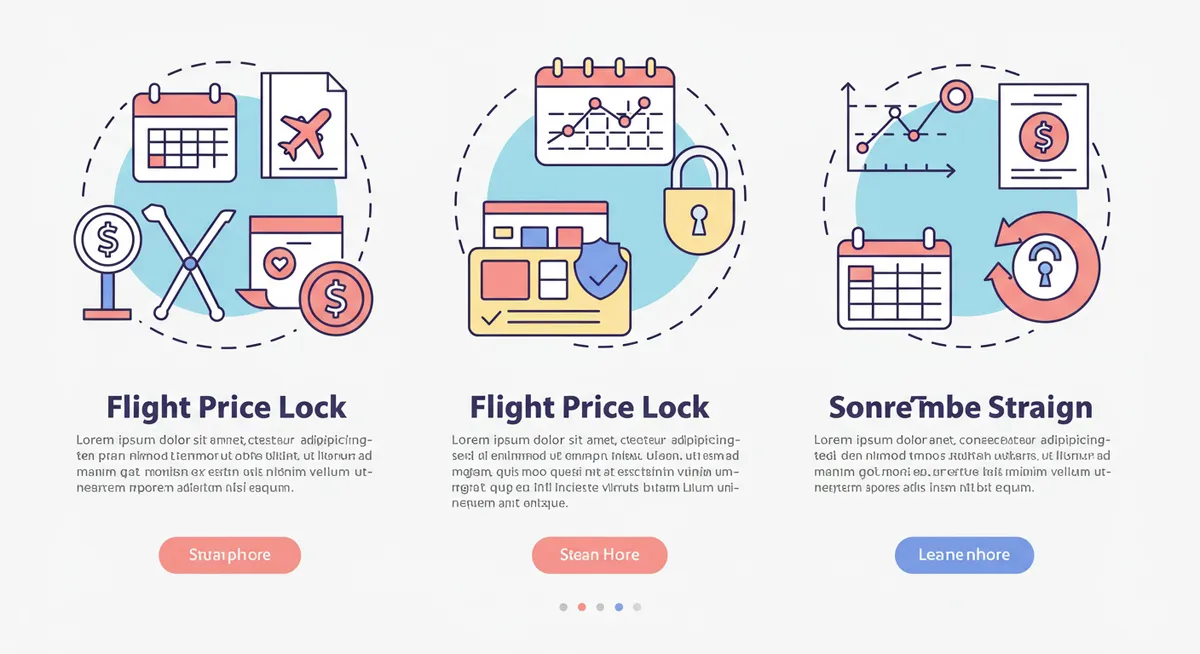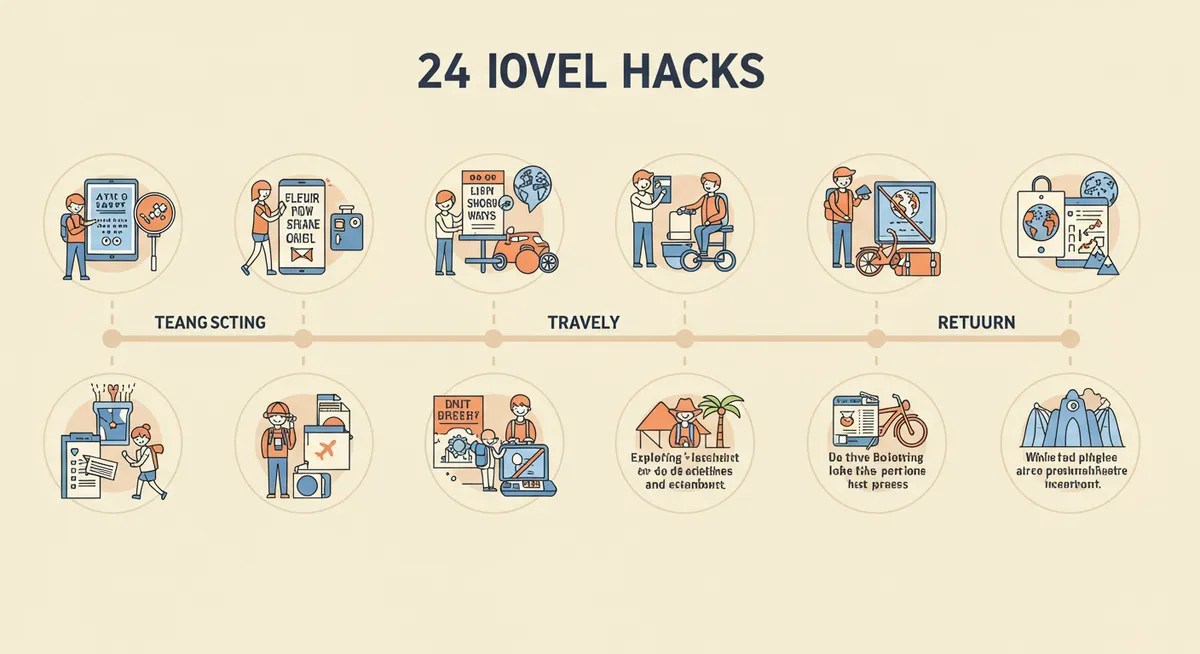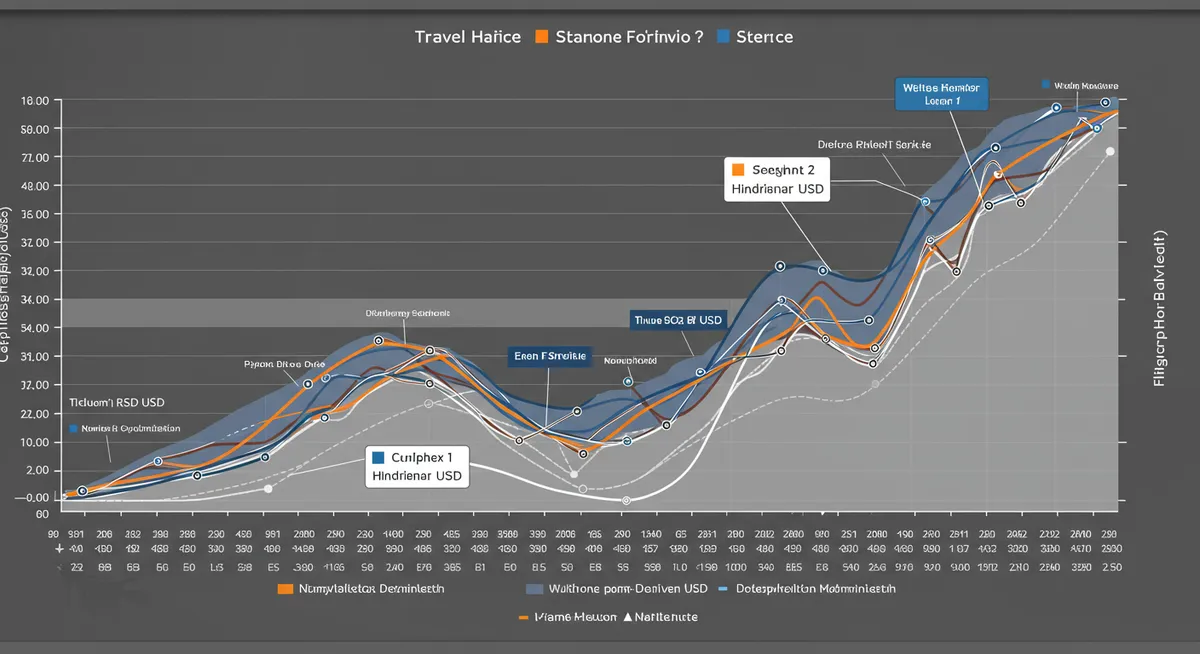
24-Hour Flight Price Lock Strategy: How to Save Hundreds on Airfare
Table of Contents
Want to find the best travel deals for this destination? Chat with our travel hacking specialist!
Get Travel HacksCategory: 24-hour-flight-price-lock-strategy
The 24-Hour Flight Price Lock Strategy: How to Save Hundreds on Airfare
Airline ticket prices are notoriously volatile, often changing multiple times within a single day. This unpredictability makes finding the absolute best fare challenging, leaving many travelers wondering if they should book immediately or wait for better prices. Fortunately, a little-known Department of Transportation regulation provides a powerful solution to this dilemma: the 24-hour flight price lock strategy. This approach allows you to secure current fares while continuing to search for better deals, all without financial risk. In this guide, we'll explore how to implement this strategy effectively to potentially save hundreds on your next flight booking.
At hacks.travel, we've identified this technique as one of our top-rated travel strategies because it consistently delivers significant savings with minimal effort. By understanding and properly executing this approach, you'll gain a substantial advantage in the complex world of airfare pricing.
Understanding the 24-Hour Rule: Your Legal Right to Cancel
The foundation of this strategy lies in a consumer protection regulation established by the U.S. Department of Transportation. This rule mandates that all airlines operating in the United States must allow passengers to hold a reservation at the quoted fare for 24 hours without payment, or cancel a purchased reservation within 24 hours without penalty, provided the reservation is made at least seven days before the flight's scheduled departure.
This regulation was specifically designed to protect consumers from the pressure of making immediate booking decisions in a marketplace where prices fluctuate rapidly. While originally intended as a simple consumer safeguard, savvy travelers have recognized its potential as a powerful money-saving tool when used strategically.
"I discovered this strategy by accident when I had to cancel a flight shortly after booking. When I continued searching and found the same route $210 cheaper the next morning, I realized this rule could be used intentionally to secure better deals." — Jason M., Frequent Traveler
How the 24-Hour Price Lock Strategy Works
The implementation of this strategy involves a simple but effective process:
Step 1: Find a Reasonable Fare
When you discover a flight at a price that seems reasonable (not necessarily the absolute best deal, but acceptable), book it directly through the airline's website. This direct booking is crucial, as some third-party booking sites have different cancellation policies that might not align with the DOT regulation.
Step 2: Document Everything
Immediately after booking, take screenshots of your confirmation, record your reservation number, and note the exact time of booking. This documentation helps ensure you can cancel within the precise 24-hour window if necessary.
Step 3: Continue Searching
Over the next 24 hours, continue monitoring prices for your route across multiple platforms. Set up immediate fare alerts on services like Google Flights, Kayak, or Skyscanner to be notified of any price drops. Check competitor airlines that fly similar routes, as they sometimes adjust prices in response to bookings on other carriers.
Step 4: Make the Decision
Before your 24-hour window expires, make a decision based on your findings:
- If you find a significantly better fare (typically at least $50 lower to justify the effort), cancel your original booking and book the new, cheaper option
- If no better options emerge, keep your original reservation knowing you've secured a fair price
Step 5: Precise Cancellation (If Necessary)
If you decide to cancel, do so through the airline's official website or customer service line, ensuring you receive confirmation of the cancellation within the 24-hour timeframe. Most airlines make this process straightforward through their "Manage Booking" section, but procedures can vary by carrier.

Expert Tips for Maximizing the Strategy
To get the most value from this approach, consider these advanced tactics from experienced practitioners:
Implement Parallel Searches
Use different devices, browsers, and search engines simultaneously during your 24-hour window. Airlines sometimes display different prices based on your browsing history and search patterns. Searching in incognito or private browsing mode can reveal fares that might not appear in your regular browsing session.
Consider Airline-Specific Policies
While the DOT rule applies to all airlines operating in the US, some carriers offer even more generous policies. For example, Alaska Airlines and Southwest Airlines sometimes allow holds or cancellations beyond the 24-hour minimum requirement. Research the specific policies of airlines you're considering to maximize your flexibility.
Use Fare Prediction Tools
During your 24-hour window, consult fare prediction tools like Google Flights' price graph or Hopper's price prediction feature. These tools analyze historical data to suggest whether prices are likely to rise or fall in the near future, giving you additional context for your decision.
Pro Tip: Set a reminder alarm for 23 hours after booking to ensure you don't miss the cancellation window if you find a better fare. Airlines are strict about the 24-hour timeframe and typically won't make exceptions if you're even a few minutes late.
Apply the Strategy to Multiple Bookings
If you're booking tickets for a family or group, the potential savings multiply. A $75 price drop per ticket becomes a $300 saving for a family of four. This makes the strategy particularly valuable for group travel, where total savings can be substantial.
Combine with Other Booking Strategies
For maximum effectiveness, combine this approach with other strategies from our comprehensive travel hacks guide. For example, use the 24-hour window while also checking alternative airports or slightly different travel dates to discover even more potential savings.
Real-World Success Stories
This strategy has delivered impressive results for many travelers. Here are some documented examples:
International Business Class Savings
Michael from Chicago booked business class tickets to Tokyo at $3,200 round-trip. During his 24-hour window, prices dropped to $2,860 for the same flights. By cancelling and rebooking, he saved $340 without any compromise in service or schedule.
Family Vacation Windfall
The Rodriguez family booked four tickets to Orlando at $310 each. Following this strategy, they found the same flight for $230 per person just 18 hours later. Their total savings of $320 covered two days of car rental at their destination.
Last-Minute Flash Sale
Sarah booked a cross-country flight for $420. That evening, her airline announced a 12-hour flash sale, dropping the price to $299. Because she was within her 24-hour window, she was able to cancel and rebook at the sale price, saving $121.
Competitor Response
James booked with Airline A for $380. During his 24-hour window, Airline B dropped their price on the same route to $290 to fill seats. He cancelled his original booking and switched carriers, saving $90 while maintaining a similar schedule.
Important Considerations and Limitations
While highly effective, this strategy does have some limitations to be aware of:
Booking Timeline Requirement
The DOT rule only applies to reservations made at least seven days before departure. For last-minute travel (within a week of flying), this strategy typically cannot be used.
International Airline Variations
Non-US airlines are only required to honor this rule for flights to or from the United States. For flights between other countries operated by foreign carriers, the rule may not apply. Always verify the specific airline's policy before booking.
Third-Party Booking Considerations
Online travel agencies and third-party booking sites might have their own cancellation policies that differ from the airline's direct policy. While many honor the 24-hour rule, some may charge service fees for cancellations. For this reason, booking directly with airlines is recommended when using this strategy.

Frequently Asked Questions About the 24-Hour Flight Price Lock Strategy
Is this strategy legal and ethical for consumers to use?
Yes, this strategy is completely legal and ethical. The 24-hour cancellation rule was established by the Department of Transportation specifically to protect consumers in a marketplace with volatile pricing. Airlines are aware of this regulation and have built it into their business models. You're simply exercising your legal right as a consumer to cancel without penalty within the defined timeframe. There are no restrictions on why you might choose to cancel, whether it's due to changed plans or finding a better price. This approach doesn't exploit any loopholes or violate any terms of service—it simply uses an established consumer protection rule as intended.
Does this strategy work for international flights or just domestic travel?
This strategy works for both domestic and international flights, with some important considerations for international travel. The DOT rule applies to all flights that operate to, from, or within the United States, regardless of whether the carrier is a US-based airline or a foreign airline. This means you can use the strategy for international flights on any airline as long as the flight originates or terminates in the US. For flights between two foreign countries on non-US carriers, the rule typically doesn't apply unless that airline has voluntarily adopted a similar policy. The strategy is particularly valuable for international flights where the absolute savings can be much higher due to the higher base prices. Many travelers report their biggest savings using this technique on long-haul international flights and premium cabin bookings.
Can I use this strategy repeatedly for the same flight to keep checking for lower prices?
While technically possible, repeatedly booking and cancelling the same flight is not recommended for several reasons. First, some airlines track this behavior and may flag your account for unusual activity. Second, each new booking creates a new 24-hour window, but there's no guarantee that prices will continue to drop; they could increase instead, leaving you with a higher fare than your original booking. Third, this approach creates additional administrative work and stress compared to a single strategic use of the 24-hour window. Instead of multiple cycles, most experts recommend using the strategy once per trip, ideally after you've already monitored prices for a while and have a good sense of what constitutes a reasonable fare for your route and dates. This balanced approach delivers the benefits of the strategy without potential complications from excessive rebooking.
How does this strategy work with travel reward points or miles bookings?
Most major airline loyalty programs honor the 24-hour cancellation policy for award tickets (bookings made with miles or points) just as they do for cash tickets. This means you can book an award ticket and cancel within 24 hours for a full refund of your miles and any taxes or fees paid. This application of the strategy is particularly valuable for reward travel because award seat availability can be highly variable, and finding the optimal redemption often requires quick action. If you see an award seat available at a reasonable mileage cost, you can lock it in while continuing to search for better options. Some programs, like United MileagePlus and Delta SkyMiles, explicitly state this policy, while others follow it without formal documentation. As with cash tickets, it's best to book directly through the airline's website rather than through partners or third parties when applying this strategy to award travel.
What's the typical amount people save using this strategy?
Based on data collected from travelers who regularly employ this strategy, the average savings range from $40 to $200 per ticket for domestic flights and $100 to $300+ for international flights. These figures represent approximately 10-20% of the total ticket price in most cases. The highest reported savings typically occur on premium cabin bookings (business or first class) where a single price drop can result in $500+ in savings. That said, not every use of the strategy results in savings—in approximately 60-70% of cases, the original booking remains the best option throughout the 24-hour window. The strategy's value comes from creating a risk-free opportunity to capture savings when they do occur. For a family or group of four, even moderate per-ticket savings can add up to substantial total savings that might fund an extra activity or upgrade at your destination.
Does this strategy work with basic economy fares or special sale tickets?
Yes, the DOT 24-hour cancellation rule applies to all types of fares, including basic economy, special sales, and other restricted fare classes. Despite the various limitations these fare types may have regarding changes, seat selection, or baggage allowance, the 24-hour cancellation right remains protected by federal regulation. This makes the strategy particularly valuable for basic economy tickets, which normally cannot be changed or cancelled after the 24-hour window. One exception to be aware of: some airlines classify their absolute lowest "flash sale" fares as non-refundable even within 24 hours, though this practice is increasingly rare and may not comply with DOT guidelines. As always, it's best to verify the specific cancellation terms at the time of booking. If you're booking a special fare type, take a screenshot of the cancellation policy to ensure you can reference it if needed when exercising your cancellation rights.
Connecting with Other Travel Strategies
The 24-hour flight price lock approach works exceptionally well when combined with other strategies in your travel arsenal. Here are some complementary techniques to consider:
- Hotel Room Upgrade Email Template - After saving money on your flights, use our proven email template to secure a complimentary hotel room upgrade
- AI Flight Price Prediction Tool Strategy - Use AI-powered tools to identify the optimal booking window before employing the 24-hour strategy
- Travel Credit Card Points Strategy - Maximize your savings by booking your flights with cards that offer the best travel rewards
- Flight Hacks - Discover more ways to save on airfare with our comprehensive collection of flight booking strategies
- Money-Saving Travel Hacks - Learn additional techniques to reduce your overall travel expenses
This strategy is one of our Top-Rated Travel Strategies that experienced travelers consistently rely on. For a complete overview of all our proven travel techniques and tips, visit our main Travel Hacks guide.
Conclusion: A Simple Strategy with Significant Impact
The 24-hour flight price lock strategy stands out for its simplicity, legality, and effectiveness. By creating a risk-free window to capture better prices, this approach addresses one of the most frustrating aspects of travel booking—the uncertainty of whether you're getting the best possible deal.
While no strategy guarantees savings on every booking, this technique provides valuable peace of mind. At worst, you confirm that your original fare was indeed the best available; at best, you save hundreds of dollars that can enhance other aspects of your travel experience.
As airlines continue to employ increasingly sophisticated pricing algorithms, tools that empower consumers become ever more valuable. This strategy represents one such tool—a straightforward approach that leverages existing regulations to create a more level playing field in the complex world of airline pricing.
Start implementing this strategy on your next flight booking, and join the community of informed travelers who consistently secure better deals through strategic planning and insider knowledge.
Related Posts

AI Flight Price Prediction Tool: How to Save 23% on Every Flight Booking
Discover how AI-powered flight price prediction tools can identify the optimal booking time with 85% accuracy, saving you an average of 23% on airfare costs.

Hidden Destination Alternative Finder: Discover Affordable Luxury Travel Gems
Master the Hidden Destination Alternative strategy to find spectacular yet affordable substitutes for popular tourist destinations, saving up to 45% on travel costs while enjoying more authentic experiences.

Travel Credit Card Points Strategy: The Ultimate Guide to Luxury Travel on a Budget
Master the strategic use of travel credit cards to earn up to 500,000 points annually, redeeming them for $7,000+ in free flights, hotel stays, and VIP perks.